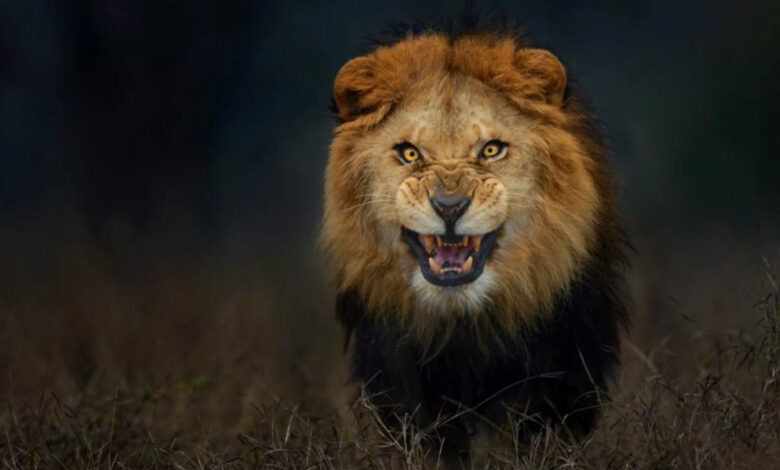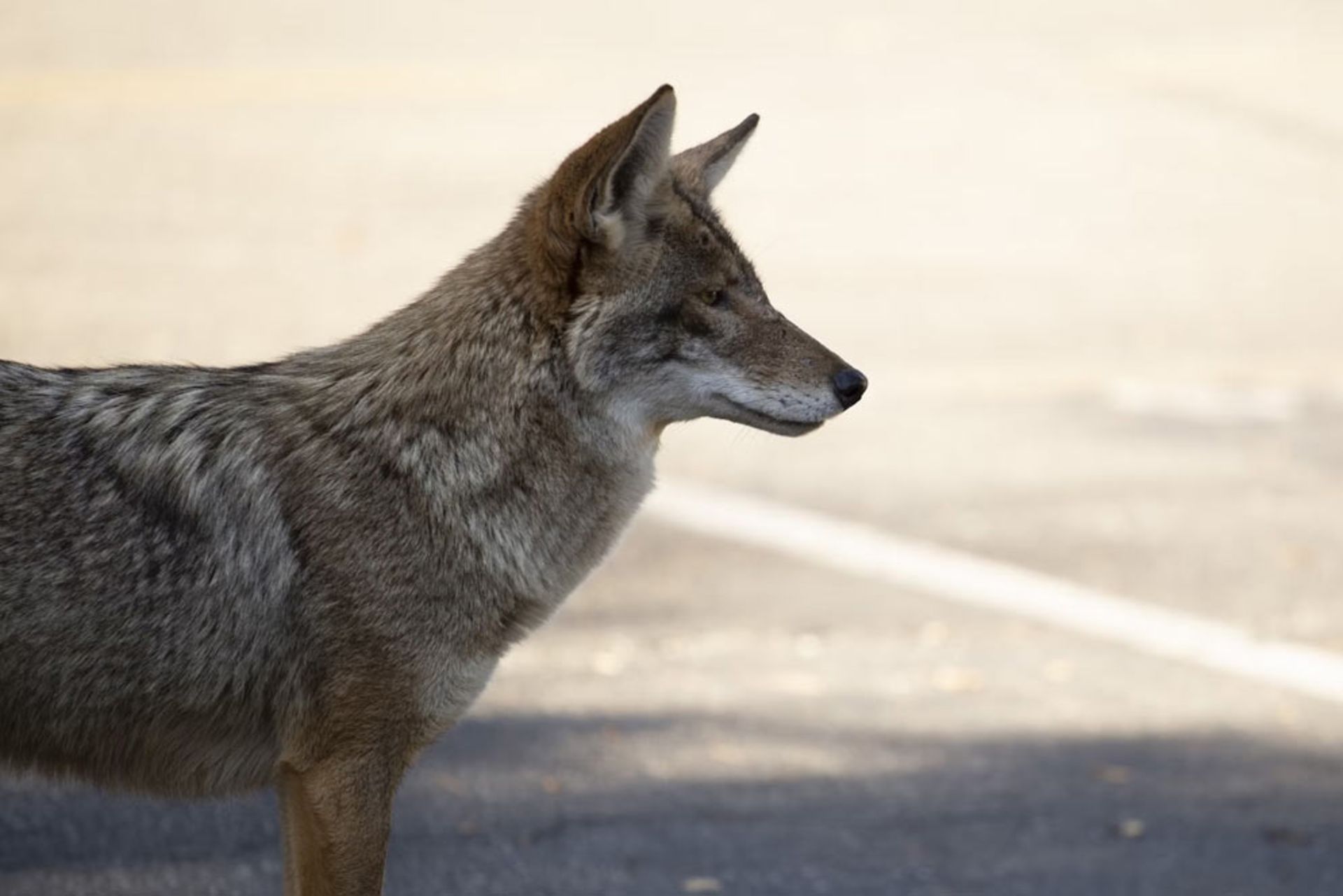
After a spate of predatory animal attacks on hikers and park rangers in the United States, the BBC investigates why animals attack humans in the wild.
Two women recently survived horrific encounters with wild animals in the United States. Kerry Burger He was riding his bike with his friends on the Tucol Creek forest trail near Fall City, Washington, when two mountain lions appeared in front of them. One of the lions went into the forest, but the other attacked him and bit his face and did not let him go for 15 minutes. After Berger’s friends tried to free him with stones, sticks and knives, as well as Berger hitting the animal’s eyes and mouth, the mountain lion finally released him. Berger was able to escape with the help of his friends; But he suffered serious and permanent damage to his facial nerves.
Vanessa Chaput While jogging with his dog in the Haines neighborhood of Canada’s Yukon Territory, he encountered three grizzly bears. When his dog’s collar was untied, one of the bears attacked him and placed its jaws on Chapot’s head. Fortunately, her hair clip broke in the bear’s mouth and released her. His dog’s barking distracted the bear and allowed him to escape, although he suffered significant injuries, including nerve damage and broken bones.
Human contact with carnivores leads to defensive behavior of animals
When humans and carnivores encounter each other unexpectedly, the element of surprise triggers defensive behavior in animals. Neither Berger nor Chaput did anything to incite conflict. For example, a grizzly bear may try to knock or knock down a person out of fear and then run away. This is a common pattern in bear encounters.
Christopher Serohinretired grizzly bear recovery program chief at the US Fish and Wildlife Service, He says that in most cases, authorities do not take lethal action against bears, although both a mountain lion and a grizzly bear have been killed in recent attacks on humans. As human population expands and climate changes lead to resource scarcity, conflict between humans and wildlife increases. This trend can undermine conservation efforts, as seen with the decline of wolf populations in Europe and the United States and the extinction of some tiger subspecies in the Southern Hemisphere.

iStock
Vincenzo Pantriani“There is a lot of attention around these attacks, but in reality the number of attacks is very small,” says a researcher at Spain’s National Research Council (CSIC). Between 1950 and 2019, there were 5,089 attacks by large carnivores worldwide, according to a 2023 study by Pentriani. Only 32% of these attacks resulted in human deaths, and two-thirds of the casualties were big cats such as lions and mountain lions.
Carnivore attacks on humans often have three main causes, some of which can be prevented:
- Natural aggression: This type of conflict occurs when animals feel threatened, such as females protecting their young or animals guarding a food source. Conflicts can usually be avoided if people stay away from these animals and their resources.
- Food related conflicts: Carnivores that become dependent on human food and find food in campsites or garbage cans lose their natural fear of humans. This leads to more collisions, which often result in the death of the animal.
- Attacks of predatory animals: These attacks are rare and occur when a carnivore views humans as prey. Such attacks have accounted for only 17% of incidents in North America since 1955 (1333-1334). An example is the recent mountain lion attack in California, in which one person was killed and another was injured.
Additionally, some attacks are sparked by people trying to photograph or feed animals in their natural habitats. These encounters often end with the animals being killed for safety reasons. Christian Wilkinson“Eventually, the animal will get used to people, and it will get used to people,” says a postdoctoral researcher at the University of California, Berkeley, who studies coyote-human conflicts. [سپس] Bad things happen to animals.”
Animal attacks on humans can be prevented with proper measures
Pantriani and his colleagues, through many studies, believe that many animal attacks, possibly up to 50%, could be prevented if people behaved differently. A 2017 study by Pantriani found that engaging in risky behavior around large carnivores increased the likelihood of an attack.
According to a 2017 study, two of the most common high-risk behaviors are parents leaving their children unattended outside to play and walking dogs off-leash. Wilkinson says 66 percent of coyote attacks involve a dog. Wilkinson says:[مردم] “They’re in a situation where their dog is being chased, or their dog is chasing a coyote, or maybe they’re taking their dog near a den that’s been marked and the coyote is trying to chase them away.”
Pantriani’s research shows that attacks by large carnivores have increased steadily from 1950 to 2019; Although this may be partly influenced by the simultaneous increase in reports of human-wildlife conflicts. There are several key reasons for this situation. In recent decades, carnivore conservation efforts and population recovery have been relatively effective. “The grizzly bear population in the 48 states of the mainland United States is five times what it was 40 years ago,” Serohin says.

Getty Images
Urban sprawl in high-income countries is a more worrying cause. People who move from cities to the countryside often don’t know or take the time to learn how to respect the wildlife that lives there, Saruhin says. Ignorance leads to careless behaviors, such as having garbage cans that are not animal-proof, which can ultimately turn carnivores into food-related threats.
global warming It indirectly helps to increase the conflict between humans and carnivores. As our planet warms, resources like food and water become scarcer. Carnivores and humans eventually compete for these limited resources; As a result, they face each other more often, which leads to possible conflicts. While experts believe in this connection, more research is needed to fully understand the complex relationship between global warming And conflicts between humans and carnivores are needed.
for example, Jen Millerinternational programs specialist for the U.S. Fish and Wildlife Service, said lion attacks increased in western India during the drought when lions and people relied on the same water sources.
There is a lot of attention surrounding animal attacks on humans, but in reality the number of attacks is very low
– Vincenzo Pantriani
global warming It also shortens winter and reduces snow cover in the Northern Hemisphere. Shortening winters may cause bears to end hibernation before the food they normally rely on, insects and plants, is widely available, Serohin says. “When,” he says [خرسها در جستجوی غذا] They go to low altitudes, to [درههایی] They arrive where there are many people.
As the Arctic warms and ice melts, polar bears are increasingly entering human-occupied areas in search of food, leading to deadly encounters such as the killing of a worker in Nunavut, Canada, by two polar bears.
Pentriani’s research shows that human-carnivore conflicts are more common in low-income countries with large rural areas, where agricultural land overlaps with carnivore habitat. In these areas, people often rely on agriculture and animal husbandry, which increases the likelihood of encountering carnivores. This overlap creates a cycle of conflict that often results in more animal deaths. In some cases, violence against wildlife is the only way for local people to protect their livelihoods.
Experts are adamant that culling animals in response to human-wildlife conflicts is not a viable solution, as it can lead to population decline and even extinction, as was the case with gray wolves in the United States prior to the 1960s. Instead, the focus should be on preventing and reducing the likelihood of attacks.

Photographer: Ben Mater
As human populations grow and encroach on carnivore habitats, conflict may seem inevitable, but there are ways to minimize the risk. Understanding the behavior of local carnivores and what attracts them is key. Wilkinson emphasizes that being prepared, such as keeping food packed while camping, having bear spray around where they live and keeping dogs off leash, can help prevent collisions.
Some general tips for staying safe include traveling in groups of at least three adults when in carnivore territory, not off-leash when walking even in more urbanized areas on the edge of wilderness, and avoiding outdoor activities at sunrise or sunset. That is, when carnivores are most active and maintaining a safe distance of at least 91 meters (approximately the length of a football field) in case of seeing a carnivorous animal.
Preventing animals from getting used to the presence of humans and food is a big challenge, especially as more people move to remote areas as the population grows. To address this problem, the Bear Smart community program was created by Serohin as a guide to living safely in bear habitat. The program, which is already in use across Montana, includes measures such as securing food, trash or anything with a strong odor with bear-proof trash cans, installing electric fences around livestock and gardens, not leaving food outside and transporting Bear spray while camping.
Pantriani believes that preventative measures can stop most carnivore attacks, but if an attack seems imminent, there are still ways to prevent damage. For example, if you encounter a mountain lion or other big cat, don’t run because it triggers the instinct to attack. Instead, make yourself look bigger and more threatening by clapping, kicking the ground, or even making a sudden, aggressive move toward the animal that will likely scare it off.
When an attack cannot be avoided, defensive maneuvers can help prevent serious or life-threatening injury, but they vary by animal. In case of a grizzly bear attack, you can kill yourself, lie on your stomach or cover the most vulnerable parts of your body with a backpack, says Wilkinson. It is also better to cover your head and arms. On the other hand, with the American black bear You have to fight with all your strength because you are more likely to succeed against a smaller animal.
If you encounter a mountain lion or similar predator, it’s important to defend yourself using whatever you have, such as a rock, branch, or even a bicycle, and then threaten or restrain it until the animal flees or help comes. reach
Ultimately, avoiding conflict with wildlife requires setting boundaries and respecting their space so they can do the same. Peaceful coexistence is possible, Miller believes, but humans, as the dominant species, must take the lead and take more initiative.
“If people who live with carnivores can be supported and given what they need to coexist, then human-carnivore coexistence is possible,” says Miller. Coexistence is already happening in many parts of the world, even as global warming affects habitats.









